An electric seven seater SUV, now you don’t come by those often. Mercedes EQB is based on the GLB so there’s not much to differentiate the two from the outset. There’s a few hints on the outside such as the blank front grille and the EQB blue badging and on the inside there’s the odd choice of rose gold air vents and a full-width light bar at the rear but apart from that it’s not too much of a stretch from a standard SUV.
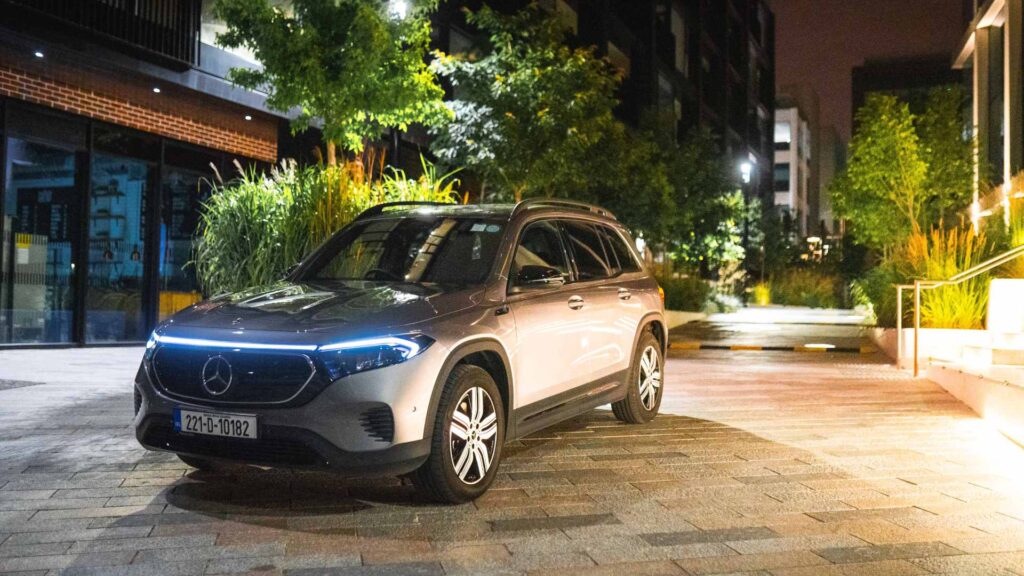
Special mention : The seven seats are brilliantly integrated into this family electric SUV. MBUX system has multiple ways to access and use the infotainment from voice commands, touch screen & buttons on the steering wheel. Beautiful on the inside. Keyless entry and keyless go work very well.
Needs work : Touch pad is sensitive, any cables trailing across it will manipulate the screen. Doors need a soft close function. Safety systems are also overly sensitive. Lane assist needs to be turned off every time you re-start the EQB. The exterior looks could be a little sharper. Slow charging is slow.
| BHP 225 | Electric / Auto |
| 0-100 km/h in 7.8 seconds | Road Tax €120 |
Price: €65,660.00 As Spec’d €72,571.00 | Boot space 465 / 1,710 litres |
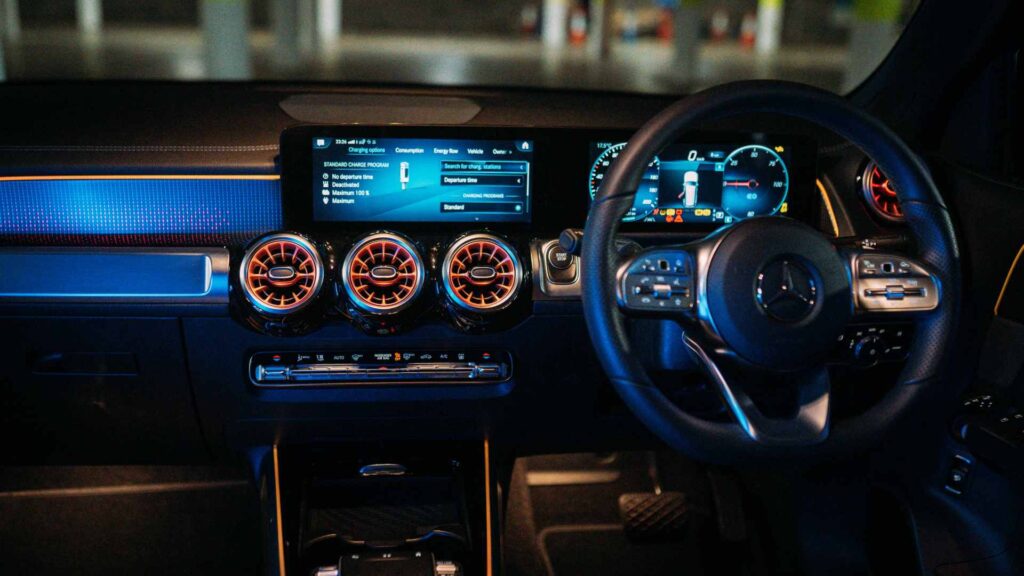
The extra row of seats are neatly hidden but when in use are really only for children and short journeys. The option of a seven-seat layout gives the EQB a significant advantage over rival EVs. The fact that it has 7 seats makes it unique in the small electric SUV class. Its rivals include Audi’s Q4 e-tron, Volvo’s XC40 Recharge, the BMW iX3, Kia’s EV6 (our 2022 Irish Car of the Year) and the Tesla Model Y.
The gap you have to squeeze through to get to the rear seats is narrow, your legs and knees are pushed up fully against the seats in front and there’s very little head room. Space in the middle row is very good with lots of headroom even if the floor-mounted battery means the seating position is a little odd as your legs are propped up higher than usual. And something that not all 7 seaters can do is include ISOFIX mounts on the third row, together with the outer seats in the middle row, this gives plenty of options for carrying many minions. When all of the seats are folded you’re left with an impressive 1,710 litres of space. The middle row has individual split folding seats and the row slides up and back. With all seats up, there’s around 465 litres of space.
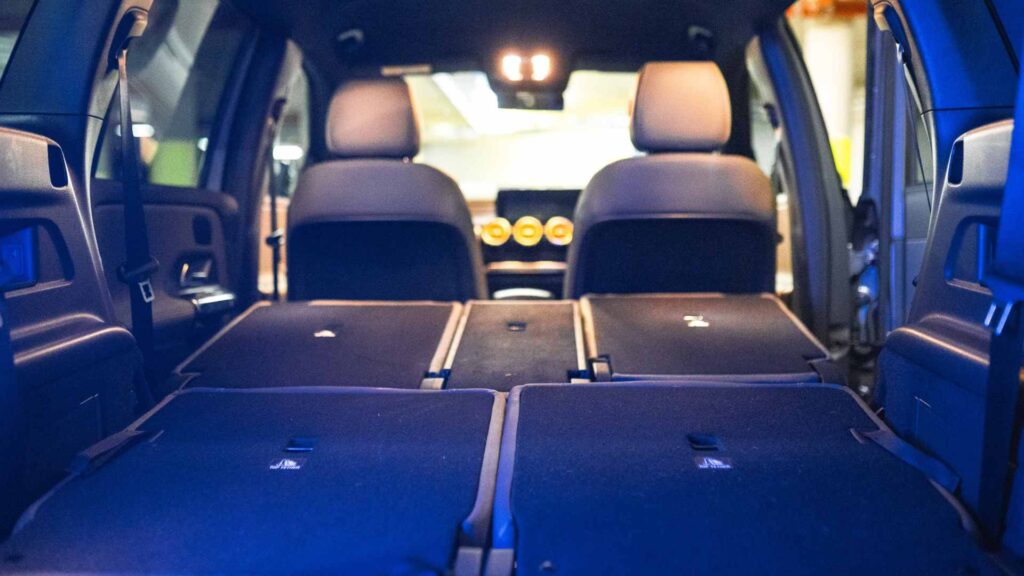
Mercedes has set the benchmark for interior design and all models come with Mercedes MBUX dual-screen infotainment comprising two screens connected to give the appearance of one long ultra-wide screen. The screens are sharp with crisp modern graphics that look great and are straightforward enough. Some functions are within a number of menus, and a few shortcut preferences wouldn’t go amiss. I do prefer the EQB MBUX system with touch pad at your left hand and landscape screen over the system in the C Class Estate tested recently where even more functionality is behind the iPad style screen. The dashboard layout works well, with a simply laid out line of buttons for the climate functions. In front of the driver is a digital instrument cluster which replaces conventional dials. The dials can be arranged with a number of selections and displays, and there are a couple of electric-vehicle specific ones too. General commands can be operated several ways, either using the touchscreen, the touchpad controller with shortcut buttons between the front seats, you’ve got voice control “Hey Mercedes!” or the steering wheel controls, so there’s multiple user friendly ways to get your chosen function.
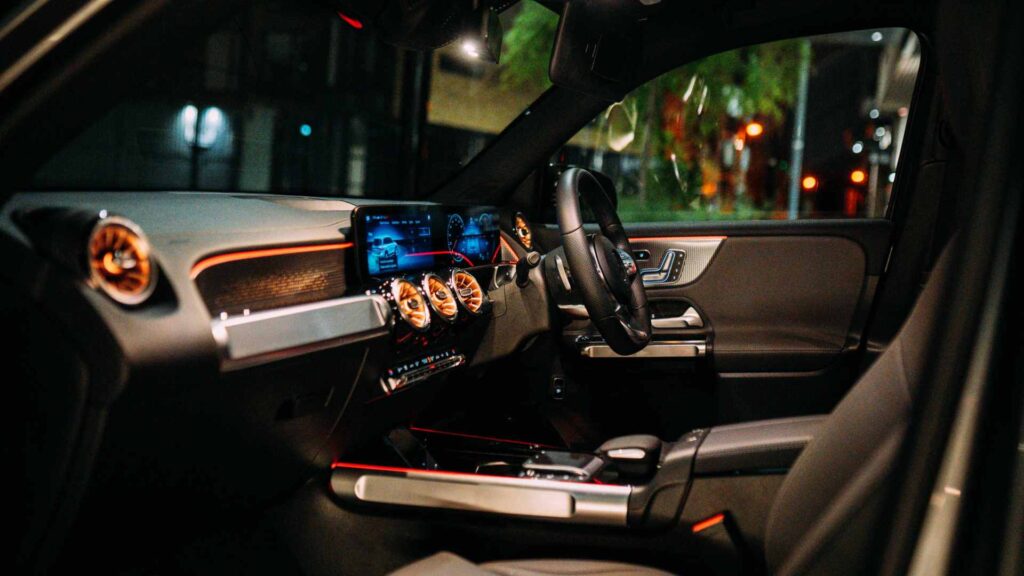
There’s a great view out the front of the road ahead, the front seats come with four-way electric lumbar support and there’s plenty of reach and height adjustment for the steering wheel. The EQB is ‘4Matic’ which means it’s four-wheel drive with one motor powering the front wheels, the other the rear wheels. It drives smoothly, with good feedback and has a well-balanced suspension setup. Overtaking is swift and easy with plenty of acceleration on tap. Thanks to the four-wheel drive set up there’s loads of grip. Driving on one pedal is possible using brake regeneration but it won’t bring you to a complete stop. You can vary the strength of the regen using the paddles behind the wheel. The most aggressive ‘-’ mode feels very heavy but you can lighten it quite a bit using the right ‘+’ pedal, which gives you gentler deceleration. The available range is up to 416 kilometres (WLTP) with an output of up to 215 kW. Using a 100kW charger Mercedes estimates a top up from 10 to 80 percent is possible in just over 30 mins. If you’re stuck using a 7kW charger, slow charging is extremely slow and should really only be used overnight.
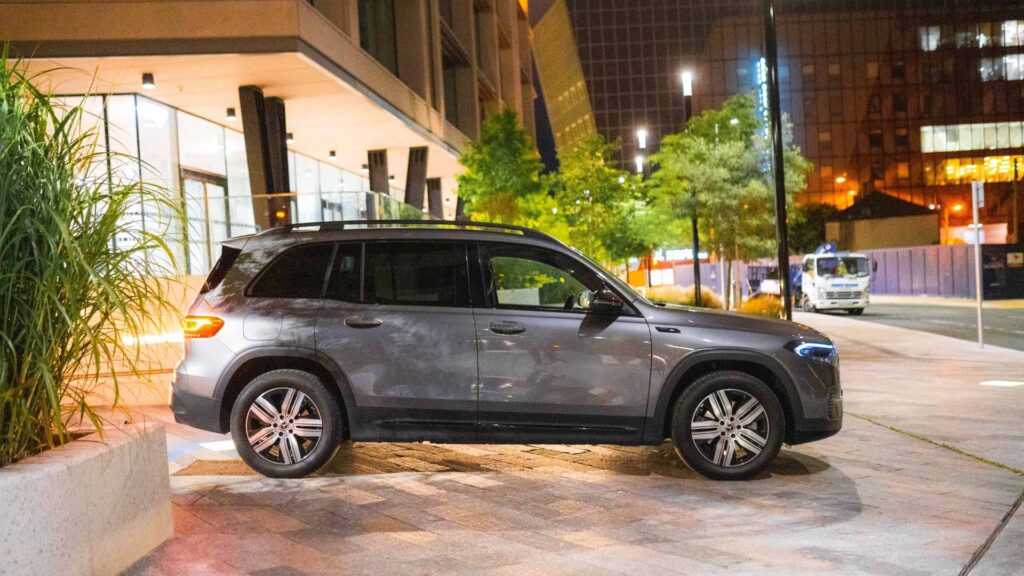
Both versions available from launch have 4Matic four-wheel drive, but there are two power outputs. The EQB 300 gets 225bhp and a 7.8 second 0-100 km/h time, while the 288bhp EQB 350 manages the same sprint in 6.2 seconds. While the Eco driving mode regenerates more energy, it has a ‘heavy’ driving feel. When you choose Comfort or Sport, power is delivered instantly and the EQB feels nippy enough at motorway speeds, helped by the additional traction of the standard four-wheel drive. Apart from the added electric sound to keep pedestrians aware, there’s only a small whine under acceleration, which dissipates when cruising.
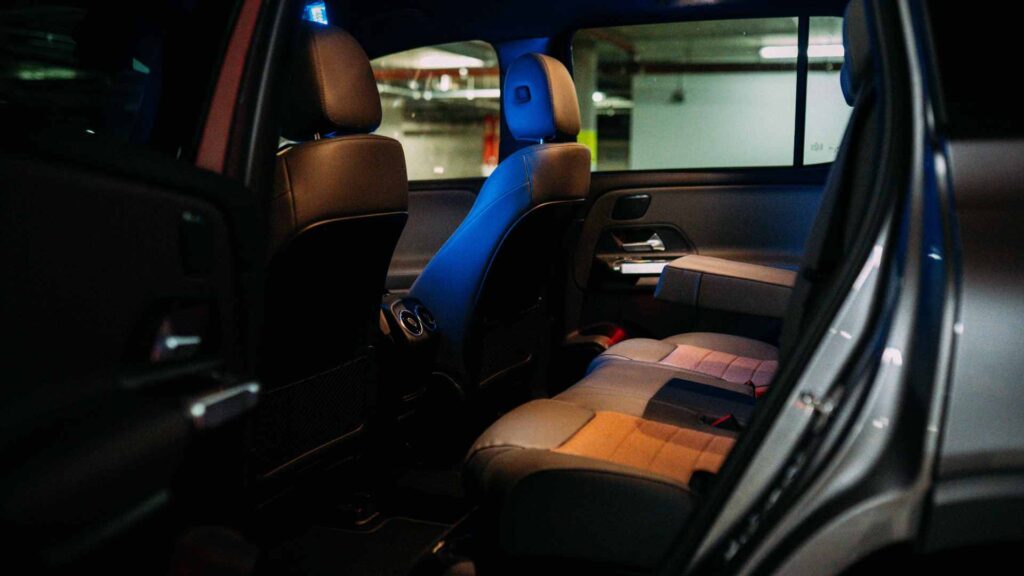
Even if it is based on the GLB, Mercedes have done a great job of adding seven seats into this electric family SUV. The range is reliable, the charging can be fast or slow depending on what’s available to you but the comfort and luxury of the cabin are its best attributes. The driver assistance comes on a little strong and while you can turn it off, it doesn’t stay off. The EQB is accomplished at the daily tasks but could handle longer range family duties with comfort and ease.
